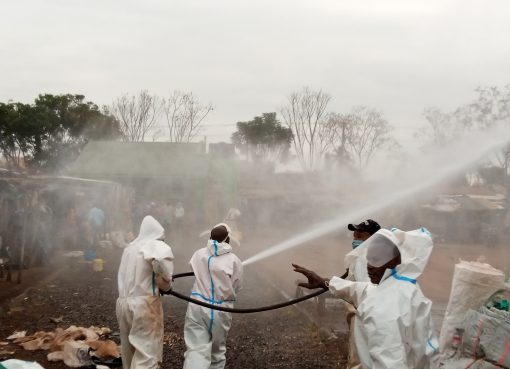The number of undetected cases of tuberculosis (TB) could be high in Meru County as many patients avoid hospitals, opting for over-the-counter medication.
Last year, Meru was ranked second in Kenya’s TB burden, recording the second highest number of drug-resistant TB after Nairobi. The county recorded 3,818 TB cases in 2021 compared to Nairobi’s 10,598, while Kiambu had 3,735.
Meru TB Coordinator Eunice Kanana has pointed out that the residents’ poor culture of seeking medical interventions continued to delay detection of TB cases in the county.
Kanana lamented that with TB being an airborne disease, the unidentified patients continue to spread the disease, leading to the county’s high burden of managing the menace.
“However, we have been sensitizing the community to avoid staying or going to crowded areas and to open windows, especially while travelling by public transport to minimize chances of contracting the disease,” she added.
The TB coordinator said that initially, the Ministry of Health had advised that anyone with a persistent cough for two weeks be screened for TB, but the strategy has since been changed, with a new requirement that any cough of any duration be suspected as TB, until proven otherwise.
Kanana said that with the new strategy of suspecting every cough, health officers were now able to identify TB cases early enough and avert further spread of the disease.
She went on to say that in order to reach more patients, they were also involving private health facilities in screening, adding that, “All private facilities are required to refer any presumed TB case to the diagnostic sites across the county. This will ensure any patient suspected to have TB can be identified irrespective of where they seek medical care.
At the same time, Kanana said that due to the biting drought in the region they are on high alert as malnutrition can trigger TB, noting that about 60 per cent of TB patients in Meru were malnourished, hence the need to remain vigilant to avert potential spread.
The high TB burden in Meru now puts the neighboring Isiolo and Tharaka Nithi counties at risk, according to Duncan Barkebo, the USAID-funded Centre for Health Solutions (CHS) TB Accelerated Response and Care (TB ARC II), Upper Eastern project coordinator.
Isiolo recorded 558 TB cases in 2021, while Tharaka Nithi had 941. “One TB patient is capable of infecting up to 15 people every year. This is why it is very important to have every patient identified and put on treatment,” said Barkebo.
Imenti South, Imenti North and Igembe North sub counties are the TB hotspots in Meru County, while Isiolo town accounts for most of the cases in Isiolo County.
The TB ARC II programme in the Upper Eastern region seeks to intensify identification of TB cases, improve diagnosis and ensure full recovery of patients.
This in line with the WHO End TB strategy to reduce the incidence rate from the current 261 per 100,000 people to 10 per 100,000 by 2030. The goal is to reduce TB deaths by 90,000 and the TB incidences by 80 per cent.
Meanwhile, six GeneXpert and two Trunat diagnostic equipment have been installed in several sub-county hospitals in Meru to ease testing, while in the neighbouring Isiolo, four similar machines have been acquired, making it easier for patients to receive screening results within an hour.
“The intention of the TB ARC II programme is to enhance case finding, diagnosis and quality of care. If more people are reached and treated, we will be able to lower the TB burden,” noted Barkebo.
By Muguongo Judy





